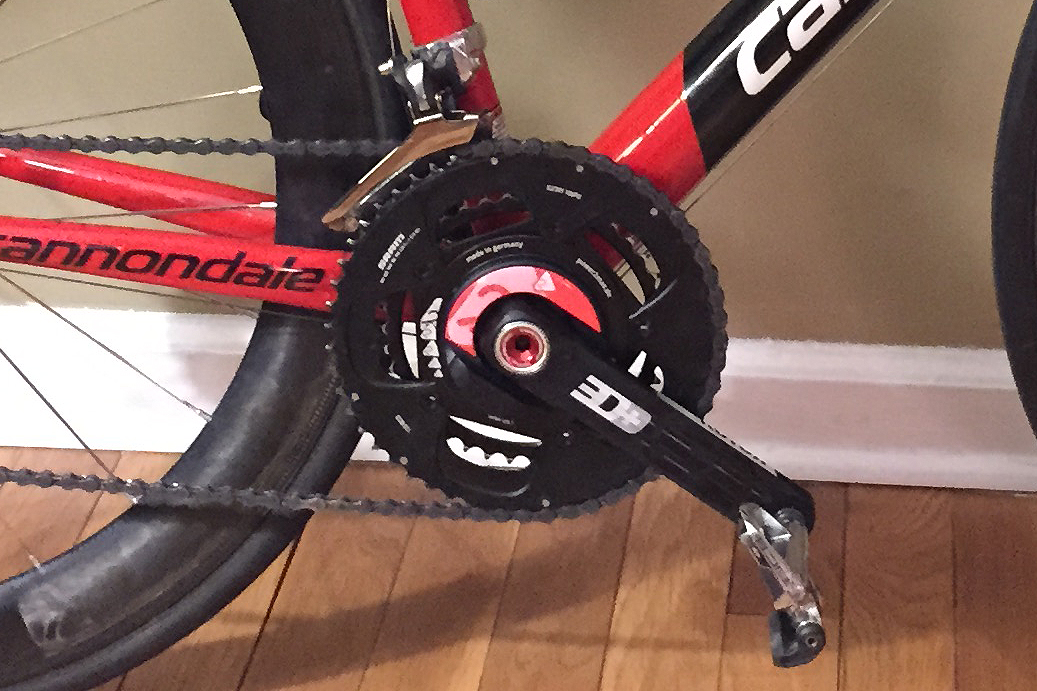Dominate with a Power Meter
If you’re reading this post, you’re probably interested in purchasing or already have a power meter on your bike. Power meters are the great leveler of training on a bicycle. Unlike heart rate, power is consistent day-in and day-out. A watt is a watt. If you’re overtrained or didn’t sleep much last night, your power output will be consistent with what your body is actually putting out. Monitoring your heart rate in a situation like that will only lead to confusion (unless you know what’s going on).
As a side note, there are many power meters on the market today – I personally use the Power2Max Type S. In the past I’ve used a wired PowerTap, and have been extremely happy with both. Neither require loads of calibration or a finicky setup process. Both have been extremely consistent in my tests as well. OK, back to training with a power meter.
As you may already know, rest is important – you can’t hammer all day every day and expect to get fast. Likewise, proper training requires riding at differing levels of intensity on the bike. Some days you’ll need to take it easy and some days you’ll need to spend time in zone five. Training properly with a power meter is all about setting the correct zones. This is the first part of training with a power meter.
Setting your baseline
The first thing you should do to start training properly with a power meter is to set your baseline, or Functional Threshold Power (FTP). Hunter Allen and Andy Coggan both pioneered this concept and it will be the foundation of your power training. (If you’ve trained with a heart rate monitor, you may be familiar with Lactate Threshold Heart Rate, which is similar to FTP). Put simply, FTP is the maximum power level that you can sustain for one hour. The unit of measurement for FTP is in watts and you can find this number by conducting a simple test on the bike.
Conducting the FTP Test
You’re now ready to see what you’ve got. Once you’re properly kitted up, you’ll want to plan your route where you’ll have a long stretch of uninterrupted riding. Preferably with a slight incline. This may be difficult to locate, so many cyclists conduct their FTP tests on the trainer. This is incredibly boring and difficult, but will provide for a consistent and repeatable test.
A typical FTP test lasts for 20 minutes. You’ll spend some time warming up (around 20-30 minutes), followed by a 20 minute all-out effort. You should focus on riding this segment as hard as you can sustain for 20 minutes. Don’t all-out sprint and then slow down. This is going to be a 20 minute sustained drag. It won’t be fun.
You’ll take the average power of your 20 minute test and multiply it by .95 (95% of your average power). WattsBoard will also automatically calculate your highest 20 minute average power. This is your estimated FTP.
As a side note, if you're ultra focused and disciplined, you can try for the 60 minute test. Theoretically, it will be more accurate.
Setting your Power Zones
Armed with your FTP, you'll want to calculate your training zones:
| Level | Zone Name | Range |
|---|---|---|
| 1 | Recovery | Below 55% |
| 2 | Endurance | 55%-75% |
| 3 | Tempo | 76%-89% |
| 4 | Limit | 90%-105% |
| 5 | Max | 106%-119% |
| 6 | Extreme | 120%+ |
These are the default zones that WattsBoard uses and will be assigned to you when you first register for an account. Adjusting your FTP will automatically update your zones for post-ride analysis.
Zones are important because they are what your training plan will be based on. Depending on your goals, you'll spend certain amounts of time in each zone.
Power to Weight Ratio
You've probably heard cyclists throwing around the 'watts per kilogram' term when referencing a monster sprint they had the other week. What exactly does this mean? Just as watts are the ultimate leveler in training, watts per kilogram (W/Kg) is a way to level the comparison between two athletes.
I weigh around 173 pounds. This is just under 79 kilos. With an FTP of approximately 300, we'll just do the following to find my w/kg at FTP:
300watts / 78.64kg = 3.81 w/kg
WattsBoard's Power Profile charts are based on W/Kg and allow you to compare directly with other riders on a level playing field, but also to compare yourself at different weights. Losing weight might bring your w/kg up if you can maintain consistent power, which can be difficult.
Here's a great thought on the importance of monitoring your power output in W/Kg from John Stone's article In depth: Strava’s “Best Efforts Power Curve” feature:
In cycling, an athlete’s power-to-weight ratio (Watts/KG) is extremely important. Assuming two cyclists with identical wattage outputs, bikes and bike handling skills, the lighter cyclist will always be faster. This difference is especially apparent when climbing or accelerating.
Power Meter Analytics
With all of this data, you'll find yourself wanting to spend hours reviewing each ride. That isn't really practical, but here are a few things you can look at post-ride.
Average and Weighted Power
Average power is pretty self-explanatory. This is the average number of watts that you put out for the duration of the ride. A little more confusing is a term called weighted power. In a nutshell, weighted power is similar to average power, but it puts more of an emphasis on higher watt numbers, since higher numbers take an exponentially larger stress toll on your body. Some see weighted power as being an estimate of what you could have held if you had sustained a consistent power output for the entire ride.
Stress Score
The stress score measures how much stress the ride was on your body. This score is calculated using Weighted Power, FTP and ride length.
Power Curve
The power curve displays the maximum power that you can sustain for a designated time interval. Different types of riders have different shaped curves.
Time Spent in Training Zones
Important for tracking how much time you've spent in certain zones. If you're working towards a specific type of power profile, you'll want to spend more time in certain zones.
Wrapping it up
Thanks for reading through this introduction. WattsBoard was built to be effective at introducing cyclists to training with a power meter. I plan to dive into these thoughts in-depth over the upcoming months, so subscribe below to receive updates when that happens!


Comments